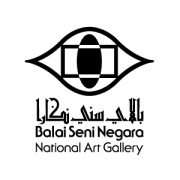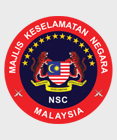|
CURATOR NOTES:
At the forefront of the exhibition, the artwork can be viewed as a visually correlative introductory piece to an exhibition that aims to study the relativity of photography, art and the collection. Such essence and context are closely tied to the subject matter of this piece.
There is only one collection of Loke Loh Hong in the national art gallery. The photo is the 344th contribution of Datuk Loke Wan Tho and is a part of the 539-photograph donated to the gallery in 1963.
BACKGROUND & EXTERNAL DATA
LOKE LOH HONG IN THE NUS ROOTS ARCHIVE
Further research entails 15 collection of Loke Loh Hong in institution abroad from the National Museum of Singapore which are put on display online at the NUS Roots Archive website. A note on the website of The NUS Roots Archive, it is stated as an online establishment in 2016 as an initiative of the Singapore government through the National Heritage Board to showcase collections and heritage of culture, stories, arts and history of Singapore.
According to the NUS Roots Archive:
‘’ Loke, ARPS, was a camera salesman and previously a negative retoucher, and a member of the Singapore Art Society, as well as Honorary Secretary of the South East Asia Photographic Society. His photographs were regularly submitted and accepted by international photography salons in the 1950s and 1960s.’’
Loke Loh Hong at NUS
Retrieved 13/3/ 2022 From
https://www.roots.gov.sg/Collection-Landing/listing/1319849
ABOUT THE PAINTER BASOEKI & HOESSEIN ENAS
In researching the imagery in the photograph, I’ve firstly noticed the similarity of painting style of romantic realism to painter Datuk Mohd. Hoessein Enas. However, this could not be truly proven as the picture is a side profile of the artist. To further clarify, I’ve referred to senior curator Zanita Anuar for information on the painter, of which she noted it to once actually be assumed to be Raden Basoeki Abdullah, the Indonesian Maestro. Whilst looking up Basoeki, it is found that he is a painter born in 1913 Surakarta, Indonesia who died tragically in 1993 from a robbery at his home. His birth in 1913 makes him 11 years older than Mohd. Hoessein Enas.
Basoeki was generally regarded as a prolific Indonesian portrait artist by Indonesian. He was most known for portraiture. Basoeki had painted portraitures of leaders, but are also known for the painting of women, mystical figures and also landscape. Basoeki paintings are known to be a part of the collection of the Bogor Palace and the Basoeki Abdullah Museum. The Basoeki Abdullah Museum was actually a house owned by Basoeki himself bequeathed by him to the Indonesian government to be made as his museum upon his demise. Further research had entailed several articles which came up with a matching painting to Loke Loh Hong photograph.
TRIVIAS
The first article was by an Indonesian news portal merdeka.com, dated 16th September 2015 and written by a journalist named Yulistyo. In the article, the reporter had reported a visit to the place by an old woman to the gallery in 2010 who claimed to be one of the women in the portrait, (the one obscured here by the painter). The woman is a Malaysian named Azah Aziz, whom she noted to be a senior journalist. This news was also reported by beritametrolima.com on the same day, both news noted that the painting is named ‘’Keluarga Cantik’’ but is more popularly known as “3 Dara”.
Further back, on 12 December 2013 another article by a newsportal antaranews.com had reported on exhibition held by Museum Bank Negara Malaysia entitled BERSAMA ART EXHIBITION. It was a joint exhibition of Indonesian and Malaysia artist that includes the painting “3 Dara” by Basoeki Abdullah. The report further clarified on the identity of the women Azah Aziz as Sharifah Azah Mohamed Alsaagoff who is regarded as Tokoh Budayawan Melayu. She is the mother to former governor of Bank Negara Malaysia, Zeti Akhtar Aziz.
Clarified by the news, it’s safe to assume that the painting in the background is in fact of Basoeki Abdullah. However, it is still not known whether the painter is truly Basoeki himself. The painting on the left is also still unknown today.
EXTRA REFERENCES
Further reading on Basoeki Abdullah & Loke Loh Hong:
Articles regarding Azah Aziz & the painting:
LINK TO A PICTURE OF THE PAINTING 3 DARA
“Tiga Dara” Siapa Tiga Wanita Cantik dalam Lukisan Maestro Basoeki Abdullah? | Beritametrolima.com
Retrieved 13/3/ 2022 From
siapa-tiga-wanita-cantik-dalam-lukisan-maestro-basoeki-abdullah.jpg (670×335) (klimg.com)
MERDEKA.COM
Retrieved 13/3/ 2022 From
Siapa tiga wanita cantik dalam lukisan maestro Basoeki Abdullah? | merdeka.com
https://www.merdeka.com/peristiwa/siapa-tiga-wanita-cantik-dalam-lukisan-maestro-basoeki-abdullah.html
METROLIMA NEWS
Retrieved 13/3/ 2022 From
“Tiga Dara” Siapa Tiga Wanita Cantik dalam Lukisan Maestro Basoeki Abdullah? | Beritametrolima.com
https://beritametrolima.com/tiga-dara-siapa-tiga-wanita-cantik/
ANTARANEWS
Lukisan “Tiga Dara” Basoeki Abdullah Dipamerkan di Malaysia – ANTARA Sumbar (antaranews.com)
|

















